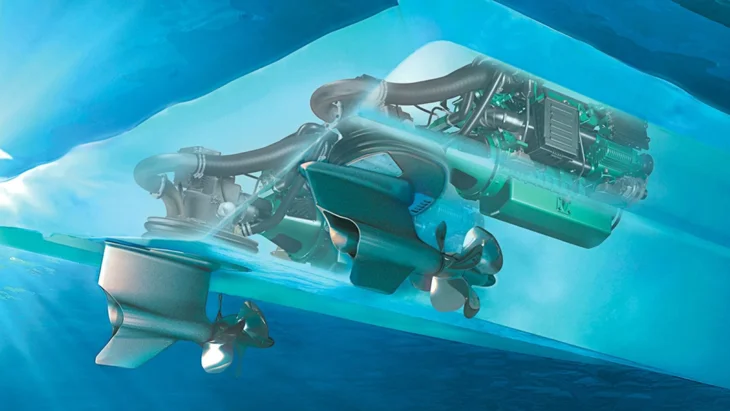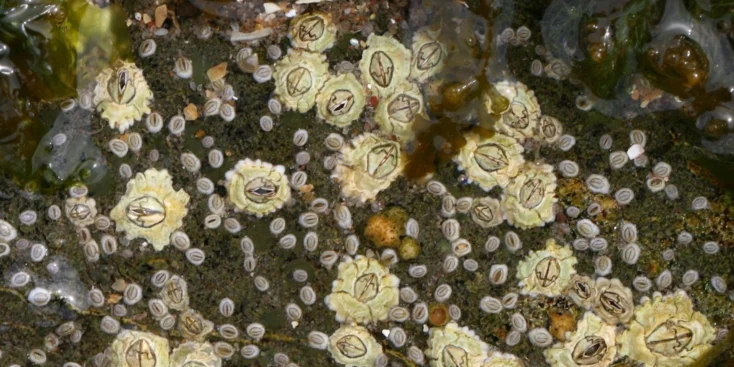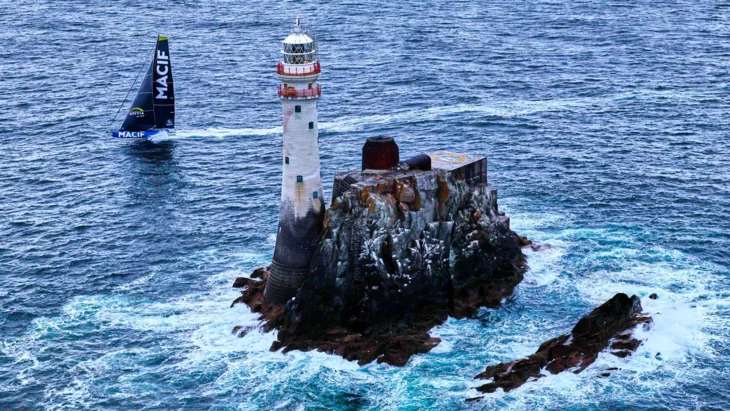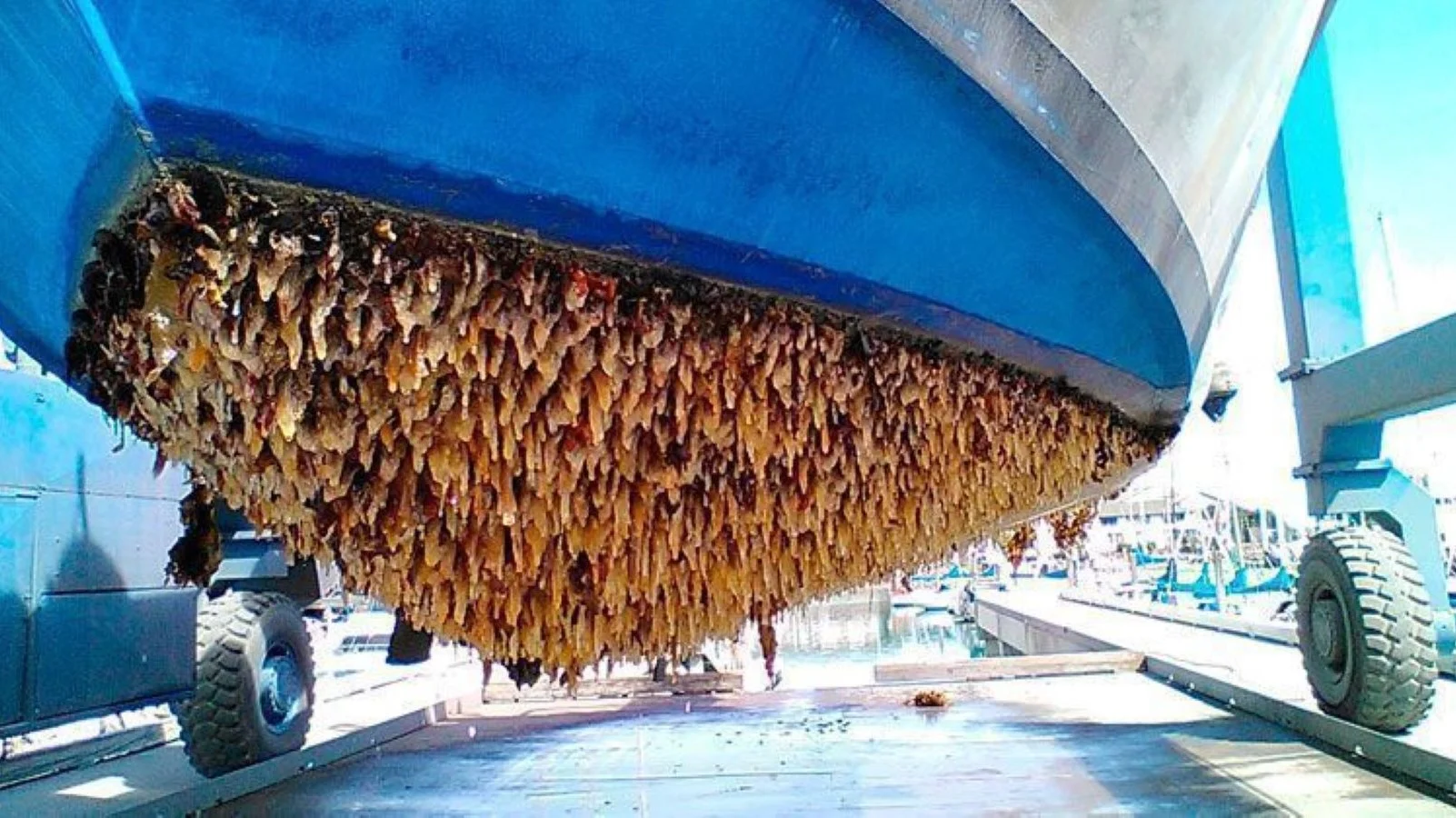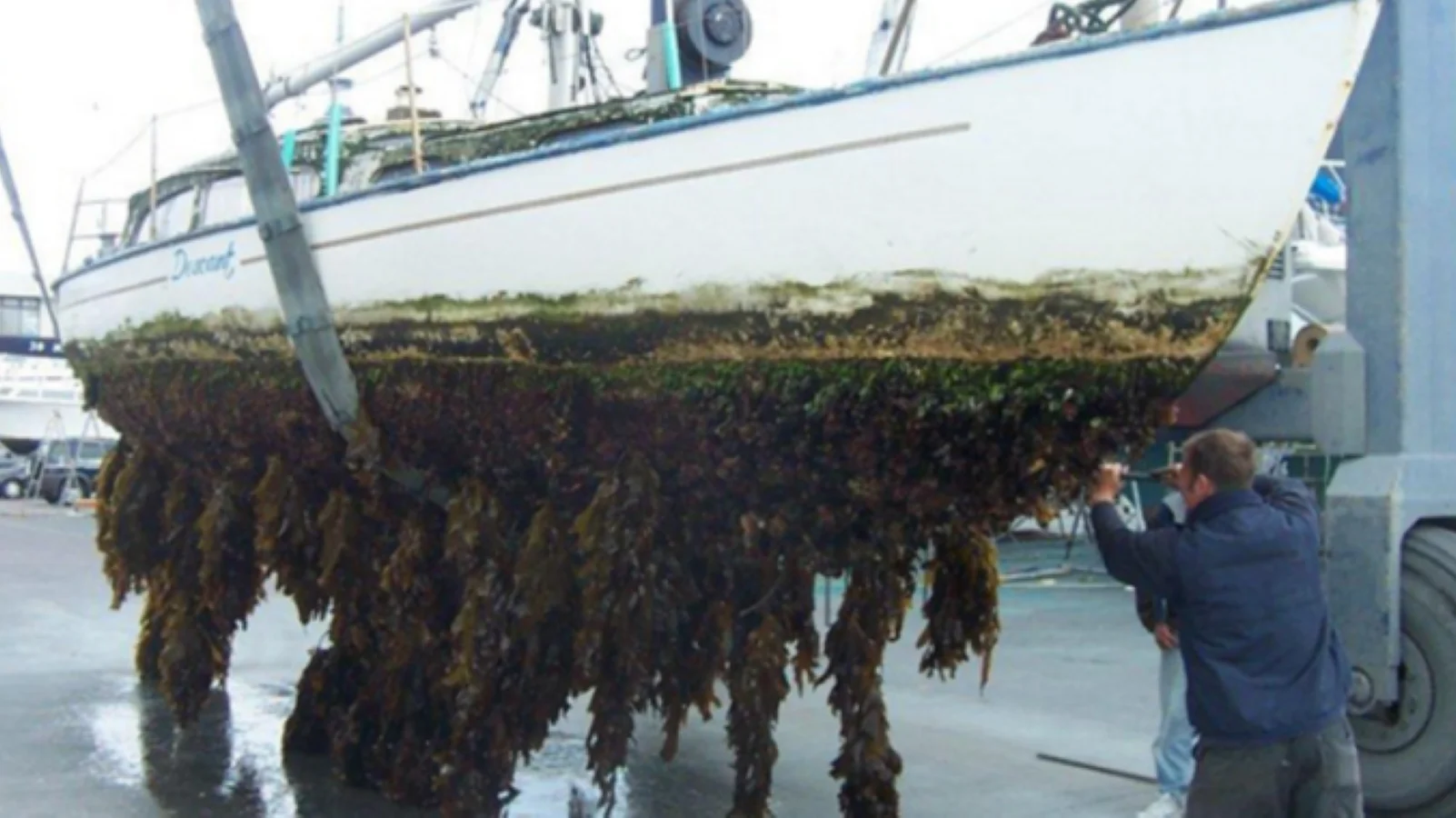Secret garden on your yacht
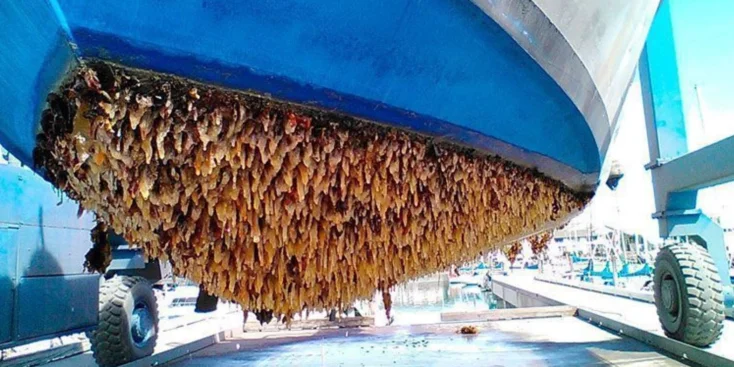
When a vessel sits in the water, the hull below the waterline gets overgrown with algae, barnacles and all kinds of microorganisms – there are over a thousand and a half species of aquatic inhabitants that may take part in the process
Fouling in saltwater takes place much faster than in fresh water. The intensity also depends on the temperature: the process is faster in warm waters. A lot of people believe that the vessels used in fresh water almost don’t get fouled, and therefore there is no need to do anything about this problem. But it is only partially true. The process is indeed almost unnoticeable in cold fresh water. But the further southwards you go, the faster the bottom covers with a slimy green outgrowth of unicellular algae, which are later joined by another sea “grass”, so by the end of the season your yacht is likely to have a decent “beard”.
It happens even faster, when the vessel sits still for too long. For instance, if a boat has been moored in the seawater somewhere in the tropics for about half a year, an outgrowth of a few centimetres thick may form on the bottom. And even if these microorganisms die for some reason (like moving from salt to fresh water), it doesn’t mean that they’ll fall off and stop being a problem. Quite on the contrary: the more fouling there is, the more attractive it gets for the new residents to join in.
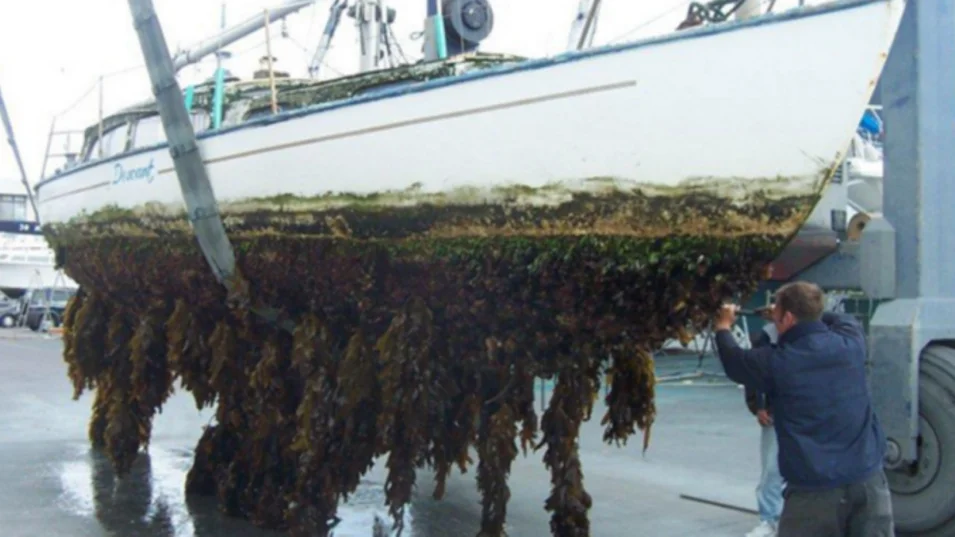
Consequences of fouling
All this “garden”, or rather a “zoo”, on the bottom of your boat does not just look bad, but weighs quite a lot, too, which means lower speed and higher fuel consumption. There have been situations when performance boats could not reach planing because of the fouling. Besides, all this outgrowth does not only cover the bottom, but everything that is below the waterline: thrusters, filters, etc. If the water intakes get clogged, you may end up with overheating and some serious damage to the engines and generators.
What to do?
First of all, use your boat as often as possible. It is harder to get a grip on a moving vessel, and what does manage to do that will be washed off at least partially with a flow of water. Secondly, cover the underwater part with antifouling paint. We are not going to dwell on particular brands here, because there are lots of them. Besides, the right choice depends on the material the hull is made of (GRP, steel, aluminium, wood), the vessel’s speed and the area of operation.
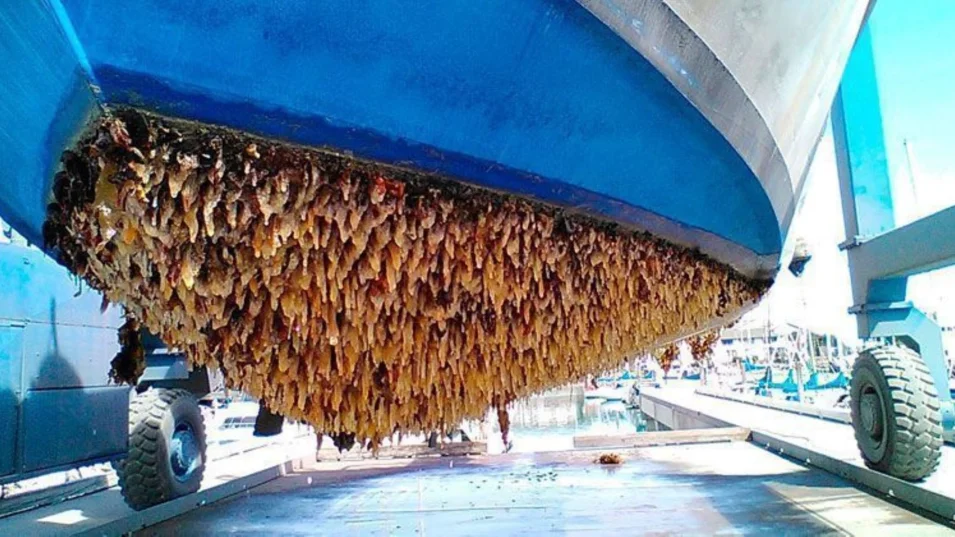
The brand and price of the paint do not have as much impact on the result as following the manufacturer’s instructions on its application. Normally they offer systems including primers and antifouling paints. Taking into account the fact that they are not cheap (just like the painting work, too), don’t get tempted to replace the original primer with something “almost the same” but cheaper. The paint may peel off, and next time you’ll have to pay a lot more than you’ve saved to be able to strip the bottom properly.
Types of antifoulers
Modern antifouling paints do a good job, but not always. They have to be reapplied regularly: some – once a season, others may last for two-three seasons. They work thanks to the use of biocides, which are chemical substances that are poisonous for the algae and microorganisms trying to get a grip on the hull. In most cases they are copper compounds. The more copper there is, the more toxic, effective and more expensive it gets. By the way, it is for this reason that the underwater part of wooden ships used to be сoppered in the old times – that was the antifouler of the 18th century.
Modern antifouling paints can be divided into hard and soft (or ablative) ones.
Soft (ablative) paints
These paints “work” when the bottom is washed by the flow of water. Particles of paint gradually slough off, exposing the lower layers with a higher proportion of copper. Impaired by the biocide, most of the growth falls off together with the paint flakes.
As the paint gradually wears off, the coating has got to be renewed. But ablative paints have two significant advantages: in contrast to hard paints, one can apply a few layers of them, ensuring reliable protection that may last longer than one season. And because this paint wears off on its own, there is no need to make an effort and remove it – a bit of polish is just fine.
The drawback is that ablative paints cannot be applied to the bottom of planing performance yachts and powerboats: a strong flow of water will wash off the coating too fast. But it is a great solution for the vessels moving at the speed under 30 km/h. For the same reason it is not a good idea to use ablative paints for trailerable boats, as the soft coating gets damaged easily every time the trailer is loaded.
Hard antifouling paints
They are not washed off by the water, but get more porous, releasing the copper – and that is it. As they are smooth and durable, they are a good fit for planing performance vessels and racing sailing yachts.
The drawback of this type of paint is that it has to be reapplied regularly, after the old paint is removed completely.
Special paints
Among the hard antifouling paints there are some compounds that do not contain any toxic copper components. Their idea is to make the surface impossible for the barnacles and algae to attach to. It is well known that some materials like glass and rubber are not prone to outgrowth. It became the basis for the use of compounds with silicone, Teflon and ceramics. If a boat stays still for a long time and its bottom is coated with a compound like this, it may get a little fouled, but most of it will fall off as soon as the boat starts moving. Opinions about this kind of coatings differ. Teflon and ceramics are quite expensive, and silicon is considered less efficient. However, a lot of people like it and it might be the only solution in the countries where it is forbidden to use toxic copper.
Moreover, copper is absolutely contraindicated for aluminium yachts and powerboats. Forming a galvanic pair with copper, aluminium gets destroyed. For this reason such boats need special coatings and very reliable primers, isolating the hull from the water.

Some steel yacht owners use cold galvanizing, i.e. apply a zinc-rich (93-95%) coating. Strictly speaking, it is not antifouling, but anti-corrosion protection, but lots of manufacturers and boat-owners claim that it also works well against algae and barnacles.
Adhesive coating
Instead of painting, some service companies offer to cover the bottom with vinyl film. The Netherlands came up with adhesive coating named Finsulate. Its creator noticed that no algae, invertebrates and microorganisms can attach to sea urchins. The coating that is similar to a carpet, imitates the structure of the sea urchin’s needles. The manufacturers claim this solution is eco-friendly, efficient for a few years and easy to replace. However, it has not got popular yet and needs more testing. However, that is a topic for another article.
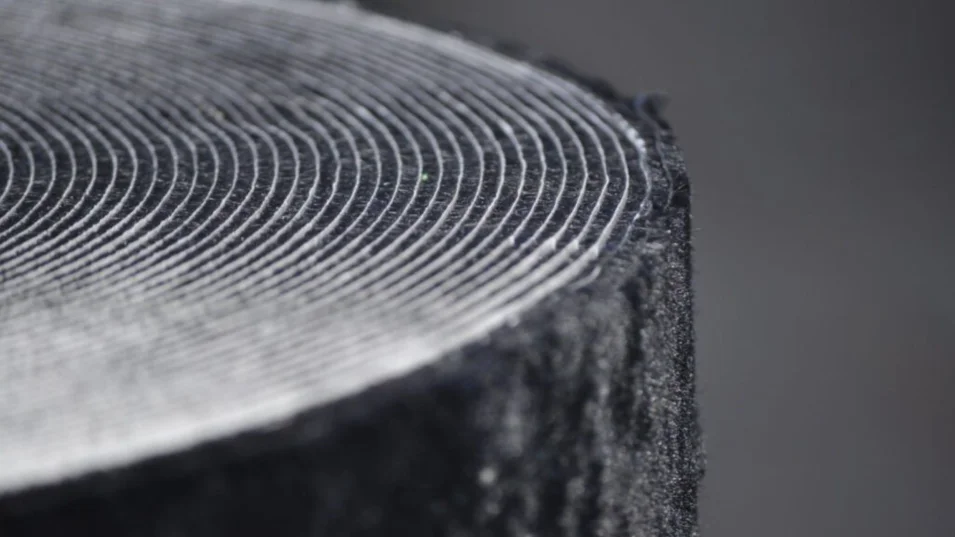
Whichever option you choose, let’s reiterate: just like everything else, boats stay in good shape when they are used frequently. So just try getting on the water as much as possible.
You have successfully subscribed to our newsletter
